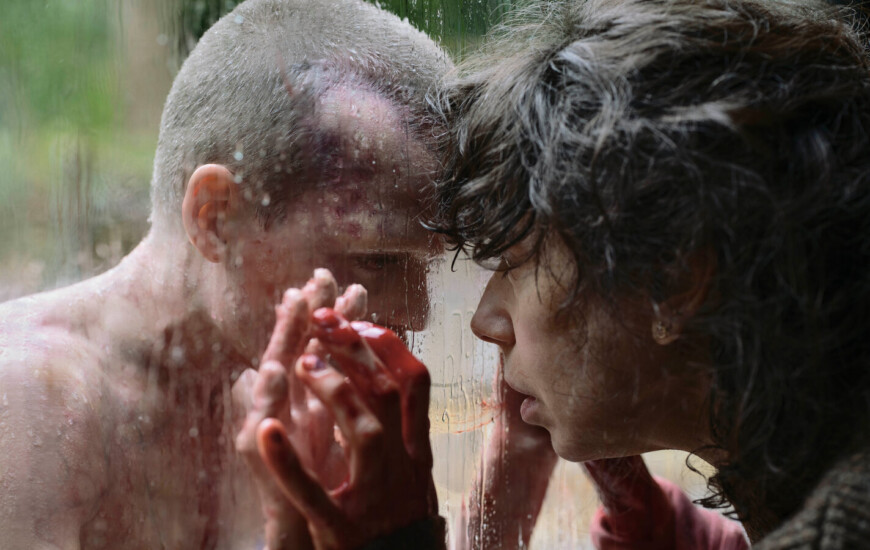Bring Her Back goes for style over substance in hollow horror flick
Mike Finnerty 23 Jul 2025
With Oasis back in fashion, people are revisiting the band’s back catalogue.
The release of 1997’s Be Here Now was greeted with a rapturous reception at the time, only to be written off by critics and fans alike as an overproduced, indulgent slog.
Just like how the brothers Gallagher nearly tanked their careers with Be Here Now, Aussie twins Danny and Michael Philippou have done the same thing with Bring Her Back, their new film, which comes in the wake of 2023’s Talk To Me.
Talk To Me was like Defintely Maybe and What’s The Story (Morning Glory) in a lot of ways; two confident brothers had the substance to back up their style.
Talk To Me was a fantastic calling card film for the Aussie directing team; the twin brothers, who cut their teeth on YouTube with their effects-driven work, made a small film that caught fire globally and announced themselves as ones to watch.
The 2023 film proved to be such a hit because it had a simple premise – what if a group of stupid teenagers tried to talk to the dead by using a cursed hand?
With a mix of gnarly special effects and a genuinely wicked comedy streak, it’s no surprise the film was such a big hit in the summer of 2023.
For young horror fans, it was an ideal entry point into the genre and for seasoned horror veterans, it was a welcome sign that the generation that grew up with Sam Raimi, Wes Craven and John Carpenter were learning from the masters.
Bring Her Back can’t be explained as cleanly; it’s broadly about wanting to speak to the dead, but it’s also about trauma, the family unit and grief.
The four main ideas are all fighting for attention, and none of them are ever fully fleshed out.
Grief is a tricky thing to depict on screen; if you do it right, like Kenneth Lonergan did with Manchester By The Sea, you create a universal shorthand for the most awful universal experience.
If you get it wrong, like Ricky Gervais and Afterlife, it becomes something with all the depth and complexity of a Live, Laugh, Love fridge magnet.
The hallmarks of the Philippou’s work are still there – the ironic needle drops, the sardonic Aussie sense of humour and the gore effects that made them famous to begin with – but something feels missing.
Bring Her Back is like listening to a car radio that’s going through a tunnel where you can hear snippets of songs as you switch through the stations, but there’s no clear sound.
At a screening of 28 Years Later at the Irish Film Institute in June, director Danny Boyle told the audience that a director’s first film is often their best because there is a purity and an innocence that a director can never get back.
Boyle name-checked examples such as Kathryn Bigelow’s Near Dark, his own Shallow Grave and Nicolas Roeg’s Roundabout as examples of directors’ first solo efforts being their purest.
Speaking of Roeg, the Philippou brothers make a decent stab at trying to make their own version of Don’t Look Now (one shot towards the end is a direct lift from the film), but while we respect the vision, it feels like they bit off more than they can chew.
In front of the camera, Sally Hawkins is the big draw, and the main reason to see this film.
It is a tribute to Hawkins’ talent that she can be the human embodiment of joy and sunshine in Mike Leigh and Paddington films and scare the hell out of you in this film.
There have been some legendary performances in horror movies over the years – Jamie Lee Curtis in Halloween, Kathy Bates in Misery, Toni Collette in Hereditary spring to mind – and Hawkins’ performance is right up there.
At first glance, Hawkins is a kooky woman who takes in two grieving children out of the goodness of her own heart.
Hawkins came to prominence thanks to her work with Mike Leigh in the superb Happy-Go-Lucky back in 2008 and has solidified herself as one of the great Mike Leigh discoveries; she is usually sunshine in human form, which makes it all the more interesting when that persona gets weaponised here.
Hawkins effortlessly plays her usual effervescent, bubbly type and can just as easily switch it to a nasty, manipulative demon at the flick of a switch.
Her performance is genuinely impressive, and credit where it’s due to both cast and crew, Hawkins’ performance is the one part of the film that works, no qualifier attached here.
Her young co-stars, Billy Barratt (the grandson of Shakin’ Stevens, yes, really!) and newcomer Sora Wong, also deserve to be singled out for praise.
Barratt plays the scared, anxious teen who is working through issues with a real, lived-in presence, and Wong plays the cheeky teenager role with aplomb.
The main complaint we have with this movie is the sense that something is missing; it isn’t a Mulholland Drive situation where it’s deliberately left unexplained and the ambiguity makes it better.
There is a fundamental problem at the centre of the movie – in an attempt to be vague and mysterious, it just ends up patience-testing and tedious.
The film’s best scares are because of the lack of explanation – that’s why we give the film a tepid endorsement – but there is this strange lack of energy at the film’s centre.
Bring Her Back is what people think all A24 or “elevated horror” films are: an overly elaborate metaphor for the grieving process and a focus on vibes over substance.
There is no question that the Philippou brothers are talented stylists and great visualists, and it is reported that they backed out of directing a new live-action Street Fighter movie to make this movie.
There are moments of genuine innovation here on a technical level, and their experience with gory special effects is second to none.
For the next film, the pair would be advised to direct someone else’s script; they can still keep their visual style, but maybe let someone else write the movie next time.
Be Here Now had a great lead single with D’Ya Know What I Mean, but the rest of the album? A write-off.











